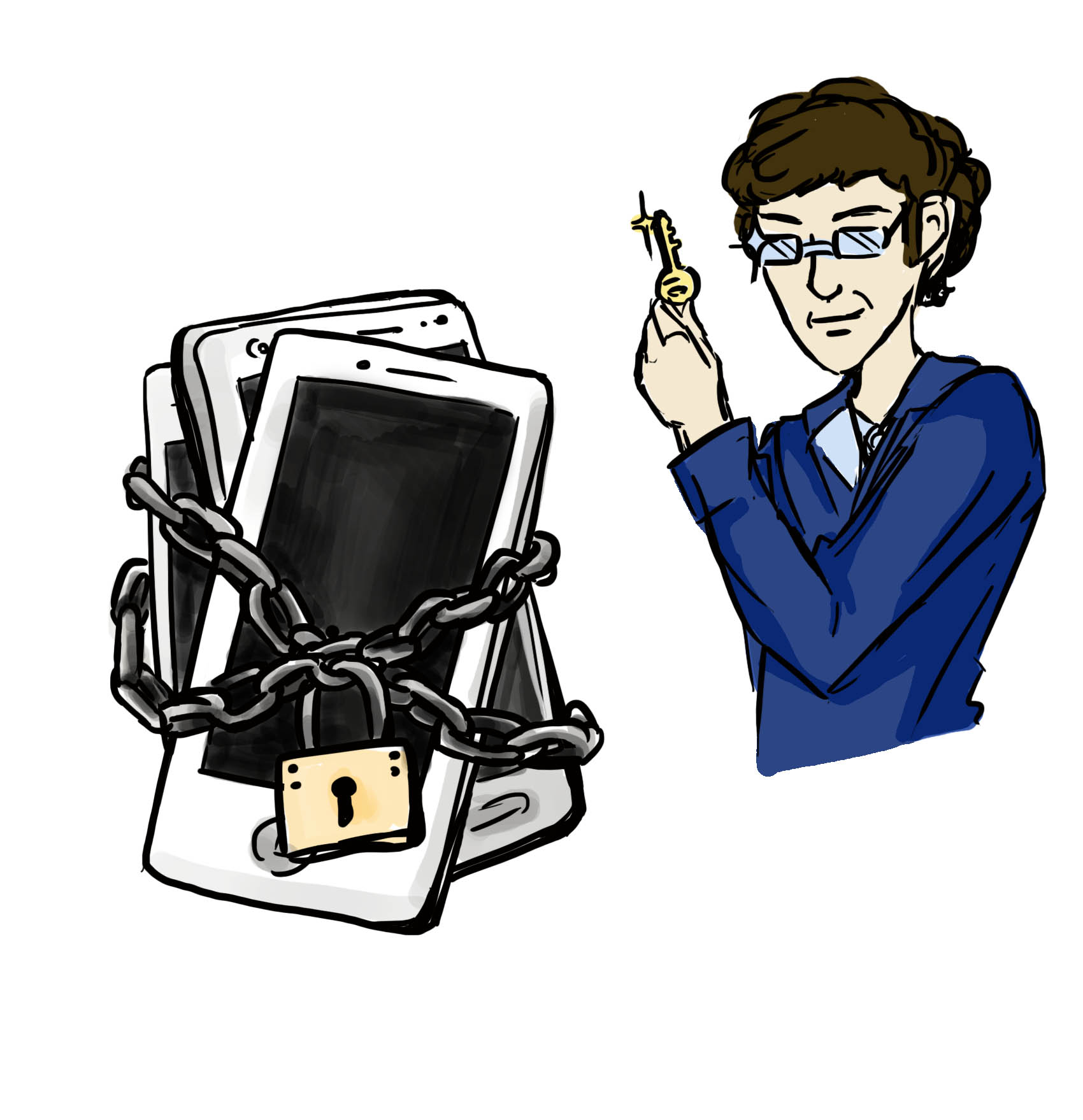Zoey Freedman: Self-motivation most effective in curbing classroom phone use

(Kelly Cheuk Ying Ho/Daily Bruin)
By Zoey Freedman
Feb. 13, 2015 12:18 a.m.
It’s not unusual to look around a lecture hall and see almost all the students’ heads bowed, but not because they’re furiously taking notes.
The use of cordless electronic devices – specifically cell phones – in the classroom has become a prevalent issue, as it increasingly detracts from learning during lecture. It has become common for students to pay more attention to their electronic devices and social media than to what’s happening in class.
Rob Richardson, a third-year computer science student at California State University, Chico, invented a phone app called Pocket Points as a way to incentivize students to put their phones down and pay attention during class. The app works by rewarding students with points based on how inactive the phone is during class time. The app detects when a student is in class by picking up on how many students in the surrounding area are also using the app. The reward points can then be redeemed for discounts at local restaurants and businesses.
Though an app like Richardson’s Pocket Points seems like a solution to the issue of mobile phones in the classroom, it only serves as an imperfect quick fix. Studies have shown that when students spend too much time on their mobile devices, there are definite consequences. “The Impact of Mobile Phone Usage on Student Learning,” a study by Jeffrey Kuznekoff and Scott Titsworth, revealed the negative impacts, which range from poor grades to diminished short-term memory, that cordless electronic devices have on students and the classroom environment.
Technology has become so prevalent that it is ingrained in our culture, but students need to take it upon themselves to shut down their electronics and prioritize learning in the classroom and elsewhere. Incentives like Pocket Points, or even attempts to incorporate technology into the class structure, are steps in the right direction but only Band-Aid fixes to a bigger problem.
Titsworth suggests a possible solution to solving the issue of split attention is embracing mobile devices in the classroom and incorporating them into the curriculum, especially since their use has proven difficult to ban. For example, teachers can have students tweet what they believe the main point of the lecture to be. Using technology as a supplement to the materials presented in lecture and even offering bonus points or participation for doing so could incentivize students who can’t part with their devices to remain engaged in class and at least pick up the main points of the lesson.
Studies like the one conducted by Kuznekoff and Titsworth have shown that when students use their electronic devices in the classroom, it diminishes their attention and disrupts the process of short-term memory because they’re not learning at a high-quality level.
Because students’ attention is split between their electronic devices and the lecture, their quality of learning is lessened, and these students tend to suffer a one to one-and-a-half grade detriment on exams.
Many teachers have already made it a custom to enact a no-technology policy in the classroom, but this isn’t the best solution because it can create a psychological barrier between the teacher and students by asking students to stop something that has become habitual, Titsworth said.
Since students negatively receive these teachers’ requests not to use electronics in class, positive change would be more likely to occur if students motivate themselves to create their own no-technology policies. If students simply took it upon themselves to put their phones down for one to two hours and devoted their complete attention to the lecture or discussion, there would likely be much less material to learn right before the midterm and less time playing catch-up for a class that you actually attended.
Additionally, if the idea of grades suffering isn’t enough, think of the thousands of dollars in tuition you’re paying to beat your friends on Trivia Crack or scroll through Instagram. Students are paying full price to only take in bits and pieces of their education and the wealth of knowledge that professors and other students have to offer.
Providing positive incentives to change habitual behavior is a solution, but it’s an imperfect one. Students need to take it upon themselves to acknowledge the consequences of using electronics during class and decide if chatting with friends and staying up to date on social media is more important than their education.


